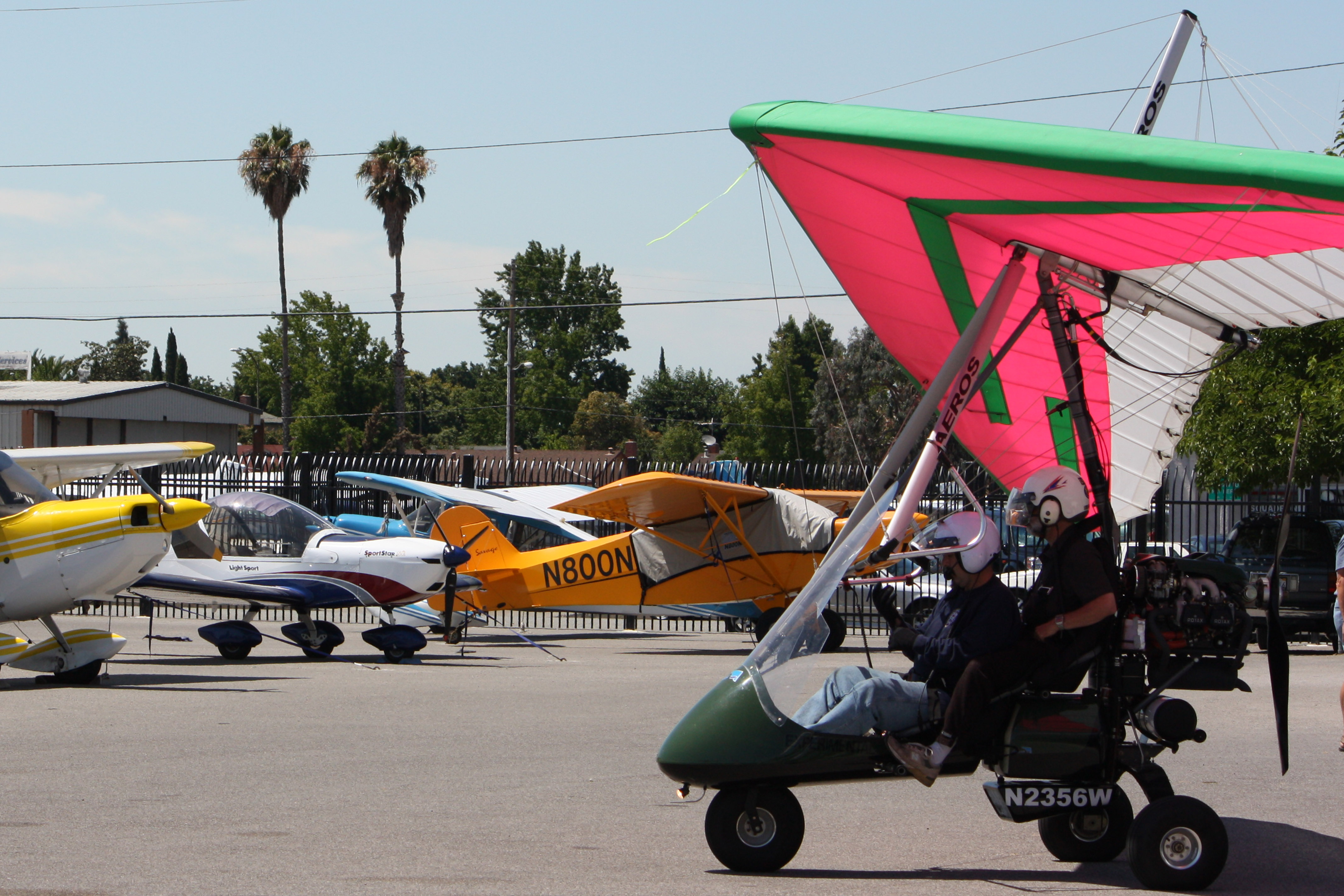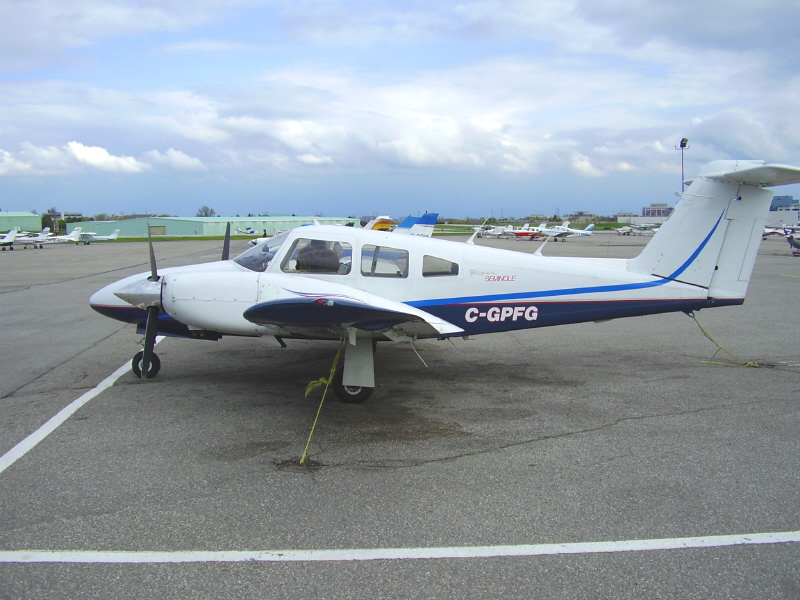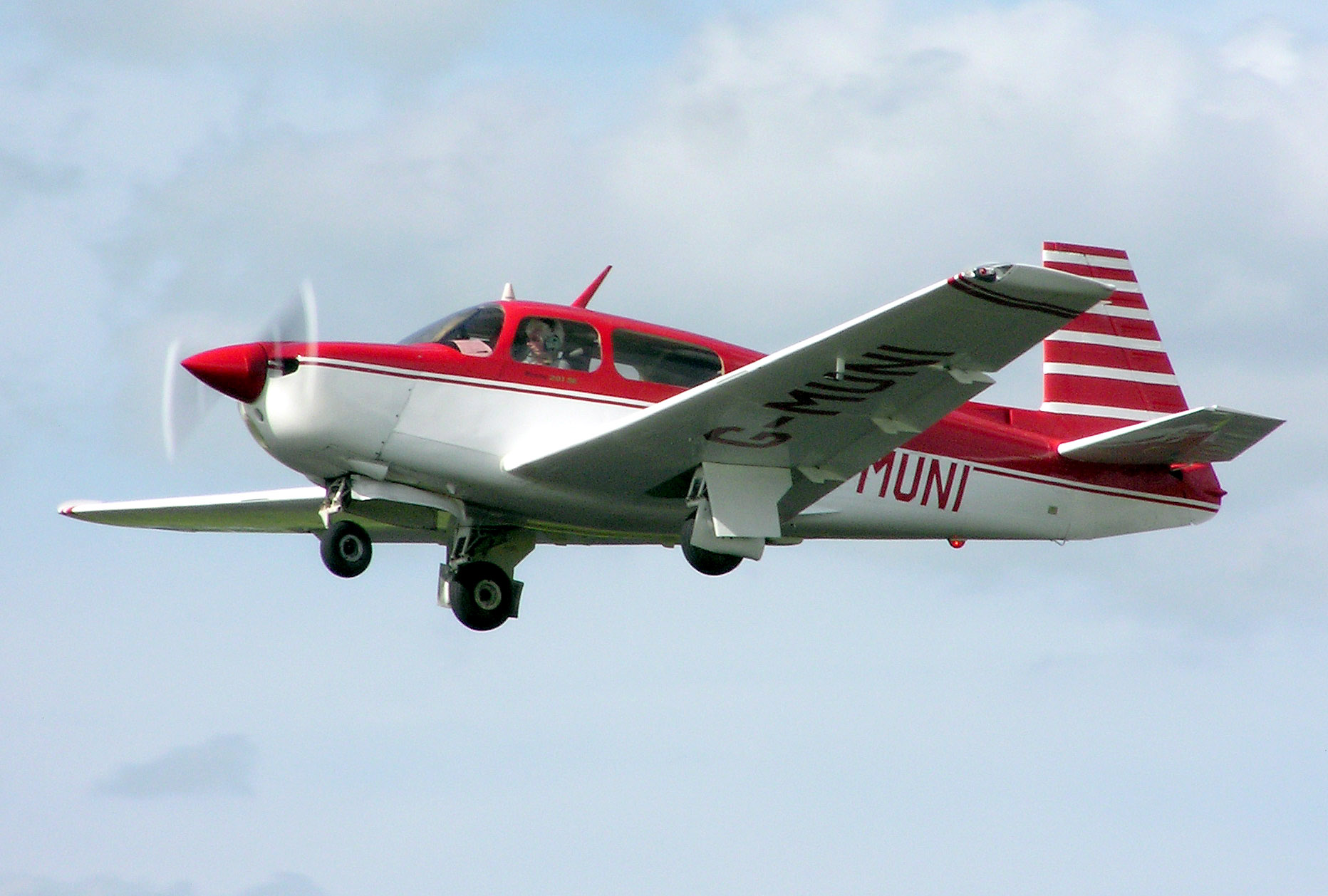|
Aero Concepts Discovery
The Aero Concepts Discovery is an American amateur-built aircraft, produced by Aero Concepts of Florida. The aircraft is supplied as a kit for amateur construction.Vandermeullen, Richard: ''2012 Kit Aircraft Buyer's Guide'', Kitplanes, Volume 28, Number 12, December 2011, page 38. Belvoir Publications. ISSN 0891-1851 Design and development The Discovery is a three lifting surface aircraft that features a cantilever mid-wing, a twin boom high tail, a canard surface, a two-seats-in-side-by-side configuration enclosed cockpit, fixed tricycle landing gear and a single engine in pusher configuration. The aircraft is made from composites. Its span wing employs a NASA NLF-0215 airfoil and has an area of . The canard uses the same airfoil, while the tailplane uses a NASA 63218. The aircraft's recommended engine power range is and standard engines used include the Lycoming O-360 four-stroke powerplant. Construction time from the supplied kit is 1200 hours. The company plans t ... [...More Info...] [...Related Items...] OR: [Wikipedia] [Google] [Baidu] |
WikiProject Aircraft
A WikiProject, or Wikiproject, is an affinity group for contributors with shared goals within the Wikimedia movement. WikiProjects are prevalent within the largest wiki, Wikipedia, and exist to varying degrees within Wikimedia project, sibling projects such as Wiktionary, Wikiquote, Wikidata, and Wikisource. They also exist in different languages, and translation of articles is a form of their collaboration. During the COVID-19 pandemic, CBS News noted the role of Wikipedia's WikiProject Medicine in maintaining the accuracy of articles related to the disease. Another WikiProject that has drawn attention is WikiProject Women Scientists, which was profiled by ''Smithsonian Magazine, Smithsonian'' for its efforts to improve coverage of women scientists which the profile noted had "helped increase the number of female scientists on Wikipedia from around 1,600 to over 5,000". On Wikipedia Some Wikipedia WikiProjects are substantial enough to engage in cooperative activities with outsi ... [...More Info...] [...Related Items...] OR: [Wikipedia] [Google] [Baidu] |
Pusher Configuration
In aeronautical and naval engineering, pusher configuration is the term used to describe a drivetrain of air- or watercraft with propulsion device(s) after the engine(s). This is in contrast to the more conventional tractor configuration, which places them in front. Though the term is most commonly applied to aircraft, its most ubiquitous propeller example is a common outboard motor for a small boat. “Pusher configuration” describes the specific (propeller or ducted fan) thrust device attached to a craft, either aerostats (airship) or aerodynes (aircraft, WIG, paramotor, rotorcraft) or others types such as hovercraft, airboats, and propeller-driven snowmobiles. History The rubber-powered "Planophore", designed by Alphonse Pénaud in 1871, was an early successful model aircraft with a pusher propeller. Many early aircraft (especially biplanes) were "pushers", including the Wright Flyer (1903), the Santos-Dumont 14-bis (1906), the Voisin-Farman I (1 ... [...More Info...] [...Related Items...] OR: [Wikipedia] [Google] [Baidu] |
Homebuilt Aircraft
Homebuilt aircraft, also known as amateur-built aircraft or kit planes, are constructed by persons for whom this is not a professional activity. These aircraft may be constructed from "scratch", from plans, or from assembly kits.Armstrong, Kenneth: ''Choosing Your Homebuilt - the one you will finish and fly! Second Edition'', pp. 39–52. Butterfield Press, 1993. Peter M Bowers: ''Guide to Homebuilts - Ninth Edition''. TAB Books, Blue Ridge Summit PA, 1984. Overview In the United States, Brazil, Australia, New Zealand and South Africa, homebuilt aircraft may be licensed Experimental aircraft, Experimental under Federal Aviation Administration, FAA or similar local regulations. With some limitations, the builder(s) of the aircraft must have done it for their own education and recreation rather than for profit. In the U.S., the primary builder can also apply for a repairman's certificate for that airframe. The repairman's certificate allows the holder to perform and sign off on m ... [...More Info...] [...Related Items...] OR: [Wikipedia] [Google] [Baidu] |
Aircraft Engine
An aircraft engine, often referred to as an aero engine, is the power component of an aircraft propulsion system. Aircraft using power components are referred to as powered flight. Most aircraft engines are either piston engines or gas turbines, although a few have been rocket powered and in recent years many small UAVs have used electric motors. Manufacturing industry The largest manufacturer of turboprop engines for general aviation is Pratt & Whitney. General Electric announced in 2015 entrance into the market. Development history * 1903: Manly-Balzer engine sets standards for later radial engines. * 1910: Coandă-1910, an unsuccessful ducted fan aircraft exhibited at Paris Aero Salon, powered by a piston engine. The aircraft never flew, but a patent was filed for routing exhaust gases into the duct to augment thrust. * 1914: Auguste Rateau suggests using exhaust-powered compressor – a turbocharger – to improve high-altitude performance; not accepted after the ... [...More Info...] [...Related Items...] OR: [Wikipedia] [Google] [Baidu] |
Four Stroke
A four-stroke (also four-cycle) engine is an internal combustion (IC) engine in which the piston completes four separate strokes while turning the crankshaft. A stroke refers to the full travel of the piston along the cylinder, in either direction. The four separate strokes are termed: #Intake: Also known as induction or suction. This stroke of the piston begins at top dead center (T.D.C.) and ends at bottom dead center (B.D.C.). In this stroke the intake valve must be in the open position while the piston pulls an air-fuel mixture into the cylinder by producing a partial vacuum (negative pressure) in the cylinder through its downward motion. #Compression: This stroke begins at B.D.C, or just at the end of the suction stroke, and ends at T.D.C. In this stroke the piston compresses the air-fuel mixture in preparation for ignition during the power stroke (below). Both the intake and exhaust valves are closed during this stage. #Combustion: Also known as power or ignition. This is ... [...More Info...] [...Related Items...] OR: [Wikipedia] [Google] [Baidu] |
Light-sport Aircraft
A light-sport aircraft (LSA), or light sport aircraft, is a category of small, lightweight aircraft that are simple to fly. LSAs tend to be heavier and more sophisticated than ultralight (aka "microlight") aircraft, but LSA restrictions on weight and performance separates the category from established general aviation, GA aircraft. There is no standard worldwide description of an LSA. LSAs in different countries The Civil aviation authority, civil aviation authorities in different countries have their own particular specifications and regulations which define the LSA category. For example, in Australia the Civil Aviation Safety Authority defines a light-sport aircraft as a heavier-than-air or lighter-than-air craft, other than a helicopter, with a maximum gross takeoff weight of not more than for lighter-than-air craft; for heavier-than-air craft not intended for operation on water; or for aircraft intended for operation on water. It must have a maximum stall (flight), stall ... [...More Info...] [...Related Items...] OR: [Wikipedia] [Google] [Baidu] |
Four-stroke
A four-stroke (also four-cycle) engine is an internal combustion (IC) engine in which the piston completes four separate strokes while turning the crankshaft. A stroke refers to the full travel of the piston along the cylinder, in either direction. The four separate strokes are termed: #Intake: Also known as induction or suction. This stroke of the piston begins at top dead center (T.D.C.) and ends at bottom dead center (B.D.C.). In this stroke the intake valve must be in the open position while the piston pulls an air-fuel mixture into the cylinder by producing a partial vacuum (negative pressure) in the cylinder through its downward motion. #Compression: This stroke begins at B.D.C, or just at the end of the suction stroke, and ends at T.D.C. In this stroke the piston compresses the air-fuel mixture in preparation for ignition during the power stroke (below). Both the intake and exhaust valves are closed during this stage. #Combustion: Also known as power or ignition. This is ... [...More Info...] [...Related Items...] OR: [Wikipedia] [Google] [Baidu] |
Lycoming O-360
The Lycoming O-360 is a family of four-cylinder, direct-drive, horizontally opposed, air-cooled, piston aircraft engines. Engines in the O-360 series produce between , with the basic O-360 producing . The engine family has been installed in thousands of aircraft, including the Cessna 172, Piper Cherokee/Archer, Grumman Tiger, and many home-built types. It has a factory rated time between overhaul (TBO) of 2000 hours or twelve years. O-360 family engines are also widely used in airboats, most notably in the Hurricane Aircats used by the US Army during the Vietnam War. The first O-360 certified was the A1A model, certified on 20 July 1955 to United States CAR 13 effective March 5, 1952 as amended by 13-1 and 13-2. The Lycoming IO-390 is an O-360 which has had its cylinder bore increased by , developing . Series The O-360 family of engines comprises 167 different models with 12 different prefixes. All have a displacement and bore and stroke. * O-360 carbureted seri ... [...More Info...] [...Related Items...] OR: [Wikipedia] [Google] [Baidu] |
Tailplane
A tailplane, also known as a horizontal stabilizer, is a small lift (force), lifting surface located on the tail (empennage) behind the main lifting surfaces of a fixed-wing aircraft as well as other non-fixed-wing aircraft such as helicopters and gyroplanes. Not all fixed-wing aircraft have tailplanes. Canard (aeronautics), Canards, tailless aircraft, tailless and flying wing aircraft have no separate tailplane, while in V-tail aircraft the vertical stabilizer, rudder, and the tail-plane and elevator are combined to form two diagonal surfaces in a V layout. The function of the tailplane is to provide stability and control. In particular, the tailplane helps adjust for changes in position of the center of pressure (fluid mechanics), centre of pressure or centre of gravity caused by changes in speed and attitude, fuel consumption, or dropping cargo or payload. Tailplane types The tailplane comprises the tail-mounted fixed horizontal stabilizer and movable Elevator (aeronautics), ... [...More Info...] [...Related Items...] OR: [Wikipedia] [Google] [Baidu] |
Airfoil
An airfoil (American English) or aerofoil (British English) is a streamlined body that is capable of generating significantly more Lift (force), lift than Drag (physics), drag. Wings, sails and propeller blades are examples of airfoils. Foil (fluid mechanics), Foils of similar function designed with water as the working fluid are called hydrofoils. When oriented at a suitable angle, a solid body moving through a fluid deflects the oncoming fluid (for fixed-wing aircraft, a downward force), resulting in a force on the airfoil in the direction opposite to the deflection. This force is known as aerodynamic force and can be resolved into two components: lift (perpendicular to the remote freestream velocity) and drag (Parallel (geometry), parallel to the freestream velocity). The lift on an airfoil is primarily the result of its angle of attack. Most foil shapes require a positive angle of attack to generate lift, but Camber (aerodynamics), cambered airfoils can generate lift at zero ... [...More Info...] [...Related Items...] OR: [Wikipedia] [Google] [Baidu] |
NASA
The National Aeronautics and Space Administration (NASA ) is an independent agencies of the United States government, independent agency of the federal government of the United States, US federal government responsible for the United States's civil list of government space agencies, space program, aeronautics research and outer space, space research. National Aeronautics and Space Act, Established in 1958, it succeeded the National Advisory Committee for Aeronautics (NACA) to give the American space development effort a distinct civilian orientation, emphasizing peaceful applications in space science. It has since led most of America's space exploration programs, including Project Mercury, Project Gemini, the 1968–1972 Apollo program missions, the Skylab space station, and the Space Shuttle. Currently, NASA supports the International Space Station (ISS) along with the Commercial Crew Program and oversees the development of the Orion (spacecraft), Orion spacecraft and the Sp ... [...More Info...] [...Related Items...] OR: [Wikipedia] [Google] [Baidu] |
Tricycle Landing Gear
Tricycle gear is a type of aircraft undercarriage, or ''landing gear'', that is arranged in a tricycle fashion. The tricycle arrangement has one or more nose wheels in a single front undercarriage and two or more main wheels slightly aft of the center of gravity. Tricycle gear aircraft are the easiest for takeoff, landing and taxiing, and consequently the configuration is now the most widely used on aircraft.Crane, Dale: ''Dictionary of Aeronautical Terms, third edition'', page 524. Aviation Supplies & Academics, 1997. Aviation Publishers Co. Limited, ''From the Ground Up'', page 11 (27th revised edition) History Several early aircraft had primitive tricycle gear, notably very early Antoinette planes and the Curtiss Pushers of the pre-World War I Pioneer Era of aviation. Waldo Waterman's 1929 tailless '' Whatsit'' was one of the first to have a steerable nose wheel. In 1956, Cessna introduced sprung-steel tricycle landing gear on the Cessna 172. Their marketing depart ... [...More Info...] [...Related Items...] OR: [Wikipedia] [Google] [Baidu] |






